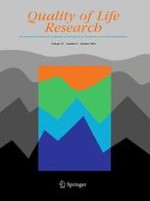01.10.2014
Health impact of sport and exercise in emerging adult men: a prospective study
Erschienen in: Quality of Life Research | Ausgabe 8/2014
Einloggen, um Zugang zu erhaltenAbstract
Purpose
Health benefits of sport and exercise are well documented in children, adolescents and adults, but little is known about emerging adulthood—a period of life characterized by significant demographic and developmental changes. The present study aimed to assess the health impact of changes in sport and exercise levels during that specific period of life.
Methods
The analysis used baseline and 15-month follow-up data (N = 4,846) from the cohort study on substance use risk factors. Associations between baseline exercise levels or changes in exercise levels and health indicators (i.e., health-related quality of life, depression, body mass index, alcohol dependence, nicotine dependence and cannabis use disorder) were measured using chi-squared tests and ANOVA. Direction of effects was tested using cross-lagged analysis.
Results
At baseline, all health indicator scores were observed to be better for regular exercisers than for other exercise levels. At follow-up, participants who had maintained regular exercise over time had better scores than those who had remained irregular exercisers or had discontinued, but their scores for health-related quality of life and depression were close to those of participants who had adopted regular exercise after the baseline questionnaire. Cross-lagged analysis indicated that regular exercise at baseline was a significant predictor of health-related quality of life and substance use dependence at follow-up, but was itself predicted only by health-related quality of life.
Conclusions
From a health promotion perspective, this study emphasizes how important it is for emerging adult men to maintain, or adopt, regular sport and exercise.
Anzeige











